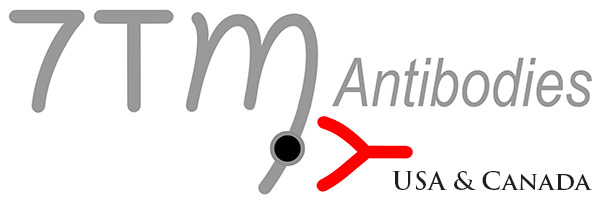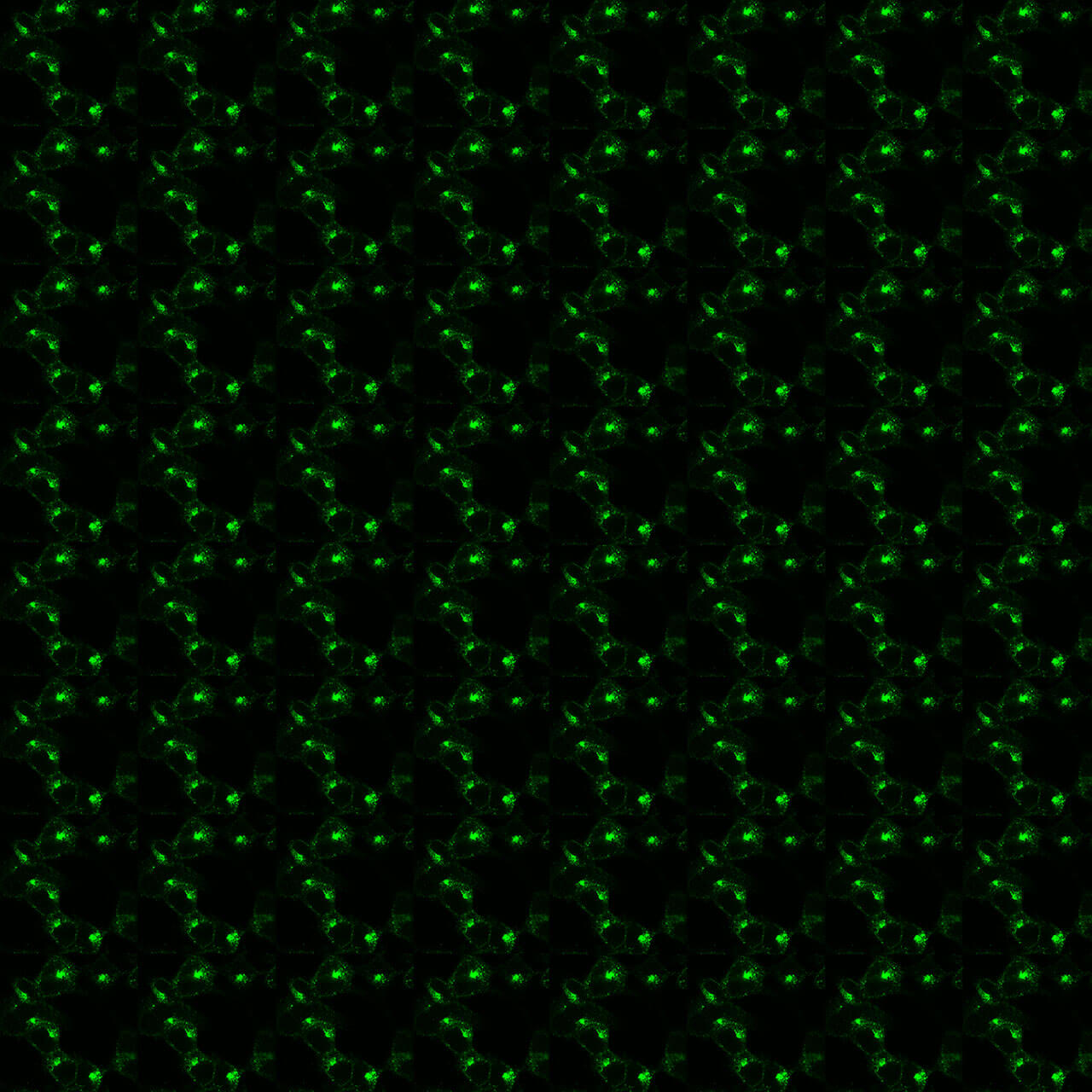No results were found for the filter!
NEW
 ACKR3 (GP-IHC-grade), Atypical Chemokine...
ACKR3 (GP-IHC-grade), Atypical Chemokine... The ACKR3 receptor antibody is directed against the distal end of the carboxyl-terminal tail of human Atypical Chemokine Receptor 3. It can be used to detect total ACKR3 receptors in Western blots independent of phosphorylation. The...
$ 375.00 *
NEW
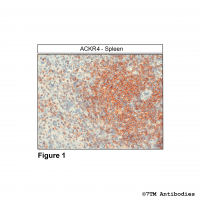 ACKR4 (IHC-grade), Atypical Chemokine Receptor...
ACKR4 (IHC-grade), Atypical Chemokine Receptor... The ACKR4 receptor antibody is directed against the distal end of the carboxyl-terminal tail of human Atypical Chemokine Receptor 4. It can be used to detect total ACKR4 receptors in Western blots independent of phosphorylation. The...
$ 375.00 *
NEW
 pS339/pS340-CX3CR1 (phospho-CX3CR1 Chemokine...
pS339/pS340-CX3CR1 (phospho-CX3CR1 Chemokine... Serine339/Serine340 (S339/S340) is a major phosphorylation site of the CX3CR1 receptor. The pS339/pS340-CX3CR1 antibody detects phosphorylation in response to high- and low-efficacy agonists and after PKC activation. S339/S340...
$ 375.00 *
NEW
 pS327/pS329-CX3CR1 (phospho-CX3CR1 Chemokine...
pS327/pS329-CX3CR1 (phospho-CX3CR1 Chemokine... Serine327/Serine329 (S327/S329) is a major phosphorylation site of the CX3CR1 receptor. The pS327/pS329-CX3CR1 antibody detects phosphorylation in response to high- and low-efficacy agonists and after PKC activation. S327/S329...
$ 375.00 *
NEW
 pT363-CCR6 (phospho-Chemokine Receptor 6 Antibody)
pT363-CCR6 (phospho-Chemokine Receptor 6 Antibody) Threonine363 (T363) is a major phosphorylation site of the CCR6 receptor. The pT363-CCR6 antibody detects phosphorylation in response to high- and low-efficacy agonists and after PKC activation. T363 phosphorylation is a key regulator of...
$ 375.00 *
NEW
 pT360/pS361-CCR6 (phospho-Chemokine Receptor 6...
pT360/pS361-CCR6 (phospho-Chemokine Receptor 6... Threonine360/Serine361 (T360/S361) is a major phosphorylation site of the CCR6 receptor. The pT360/pS361-CCR6 antibody detects phosphorylation in response to high- and low-efficacy agonists and after PKC activation. T360/S361...
$ 375.00 *
NEW
 pS357-CCR6 (phospho-Chemokine Receptor 6 Antibody)
pS357-CCR6 (phospho-Chemokine Receptor 6 Antibody) Serine357 (S357) is a major phosphorylation site of the CCR6 receptor. The pS357-CCR6 antibody detects phosphorylation in response to high- and low-efficacy agonists and after PKC activation. S357 phosphorylation is a key regulator of...
$ 375.00 *
NEW
 pS358/pT360/pS361-CXCR3 (phospho-CXC Chemokine...
pS358/pT360/pS361-CXCR3 (phospho-CXC Chemokine... Serine358/Threonine360/Serine361 (S358/T360/S361) are a major phosphorylation sites of the CXCR3 receptor. The pS358/pT360/pS361-CXCR3 detects phosphorylation in response to high- and low-efficacy agonists. S358/T360/S361 phosphorylation...
$ 375.00 *
NEW
 pT370/pT371-CXCR5 (phospho-CXC Chemokine...
pT370/pT371-CXCR5 (phospho-CXC Chemokine... Threonine370/Threonine371 (T370/T371) is a major phosphorylation site of the CXCR5 receptor. The pT370/pT371-CXCR5 antibody detects phosphorylation in response to high- and low-efficacy agonists but not after PKC activation. T370/T371...
$ 375.00 *
NEW
 pT367/pS368-CXCR5 (phospho-CXC Chemokine...
pT367/pS368-CXCR5 (phospho-CXC Chemokine... Threonine367/Serine368 (T367/S368) is a major phosphorylation site of the CXCR5 receptor. The pT367/pS368-CXCR5 antibody detects phosphorylation in response to high- and low-efficacy agonists but not after PKC activation. T367/S368...
$ 375.00 *
NEW
 pS353/pT356-CXCR2 (phospho-CXC Chemokine...
pS353/pT356-CXCR2 (phospho-CXC Chemokine... Serine353/Threonine356 (S353/T356) is a major phosphorylation site of the CXCR2 receptor. The pS353/pT356-CXCR2 antibody detects phosphorylation in response to high- and low-efficacy agonists but not after PKC activation. S353/T356...
$ 375.00 *
NEW
 pS351/pS352-CXCR2 (phospho-CXC Chemokine...
pS351/pS352-CXCR2 (phospho-CXC Chemokine... Serine351/Serine352 (S351/S352) is a major phosphorylation site of the CXCR2 receptor. The pS351/pS352-CXCR2 antibody detects phosphorylation in response to high- and low-efficacy agonists but not after PKC activation. S351/S352...
$ 375.00 *
NEW
 pT347-CXCR2 (phospho-CXC Chemokine Receptor 2...
pT347-CXCR2 (phospho-CXC Chemokine Receptor 2... Threonine347 (T347) is a major phosphorylation site of the CXCR2 receptor. The pT347-CXCR2 antibody detects phosphorylation in response to high- and low-efficacy agonists but not after PKC activation. T347 phosphorylation is a key...
$ 375.00 *
NEW
 pT353-CCR10 (phospho-Chemokine Receptor 10...
pT353-CCR10 (phospho-Chemokine Receptor 10... Threonine353 (T353) is a major phosphorylation site of the CCR10 receptor. The pT353-CCR10 antibody detects phosphorylation in response to high- and low-efficacy agonists and after PKC activation. T353 phosphorylation is a key regulator...
$ 375.00 *
NEW
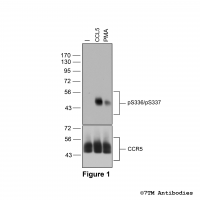 pS336/pS337-CCR5 (phospho-Chemokine Receptor 5...
pS336/pS337-CCR5 (phospho-Chemokine Receptor 5... Serine336/Serine337 (S336/S337) is a major phosphorylation site of the CCR5 receptor. The pS336/pS337-CCR5 antibody detects phosphorylation in response to high- and low-efficacy agonists and after PKC activation. S336/S337...
$ 375.00 *
NEW
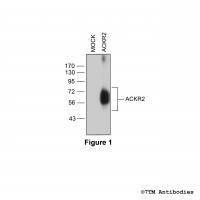 ACKR2 (non-phospho), Atypical Chemokine...
ACKR2 (non-phospho), Atypical Chemokine... The non-phospho-ACKR2 receptor antibody is directed against the distal part of the carboxyl-terminal tail of human ACKR2. It can be used to detect total ACKR2 receptors in Western blots independent of phosphorylation. The...
$ 375.00 *
Recently viewed
